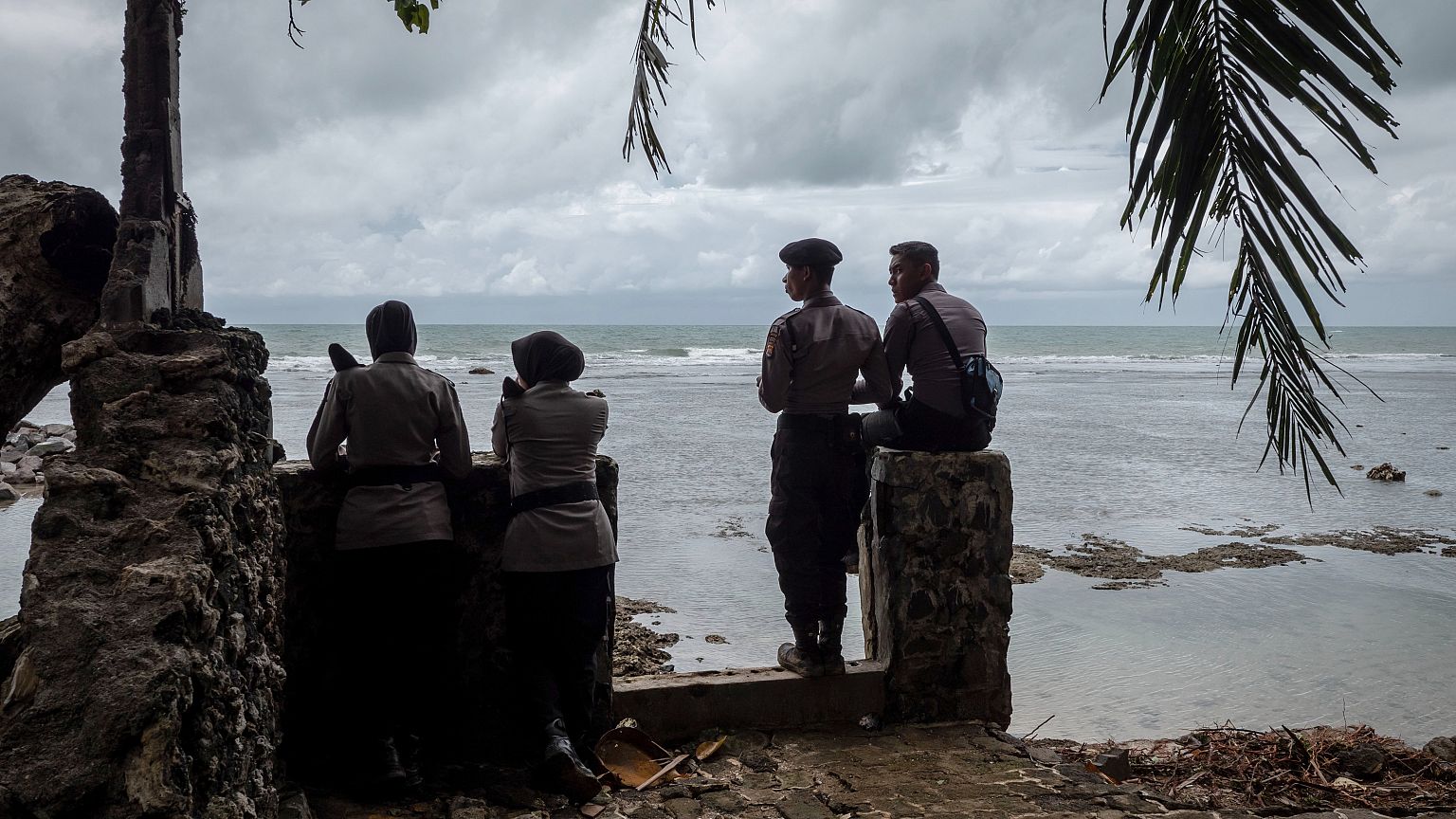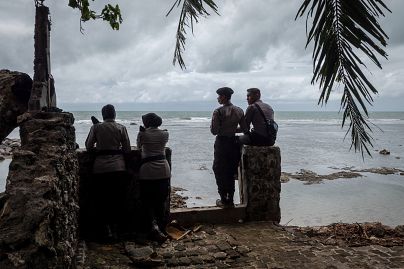Scientists confirmed on Monday that the tsunami was triggered by an underwater landslide following the partial collapse of the erupting Anak Krakatau volcano.
The desperate search for survivors following the sudden tsunami that hit Indonesia's Sunda Strait on a busy holiday weekend continued Monday with dozens still missing. Indonesian military and rescue teams fanned out using heavy machinery and bare hands to pull victims from the debris. More than 370 people were killed, at least 1,400 injured and thousands more displaced when waves crashed ashore without warning on Saturday. Over a hundred people remain missing.
News
Scientists confirmed on Monday that the tsunami was triggered by an underwater landslide following the partial collapse of the erupting Anak Krakatau volcano.Anak Krakatau has been spewing ash and lava for months before a 64-hectare section of its southwest side slipped into the ocean, officials said."This caused an underwater landslide and eventually caused the tsunami," said Dwikorita Karnawati, head of Indonesia's meteorological agency. He added that the waves hit shorelines 24 minutes after the shock, which was equal to a 3.4-magnitude earthquake.Karnawati called for improved warning systems to avoid such loss of life in future.
But a spokesman for the International Federation of Red Cross and Red Crescent Societies told NBC News that given the unique circumstance that led to this tsunami, a warning system wouldn't have likely caught the event."It probably, as experts are saying, was caused by a landslide, there would have been zero warning," Jan Gelfand said. "Nobody could have been able to predict this."There are warning systems in place for earthquake-triggered tsunamis, which account for 90 percent of those which occur in the region, said Karnawati on local station KompasTV.Volcanos are also monitored and Karnawati assured the public not to panic.But the spokesman for the country's disaster agency, Sutopo Purwo Nugroho, said there is no warning system in place for tsunamis caused by landslides or volcanic eruptions.Furthermore, a tsunami buoy chain across Indonesian waters has not functioned since 2012, Nugroho said in a series of tweets. He attributed the dysfunction to vandalism, lack of funding and technical damages.This is the second major tsunami to hit the country this year. In September, more than 2,500 died following an earthquake and tsunami that hit the island of Sulawesi.News
Although the death toll in this latest event is not quite as high, Gelfand said the destruction is still significant. Medical teams, potable water and other resources have been deployed to support the survivors.Hundreds of homes were destroyed and infrastructure, including tourist sites like food stalls and hotels, is "gone," he said.Indonesian President Joko Widodo visited areas affected by the tsunami, including health centers, on Monday.Ahead of the visit, Widodo said in a statement that he was instructing ministers of public housing and social affairs to get involved in the evacuation while prioritizing the search for victims and treatment of survivors.
















